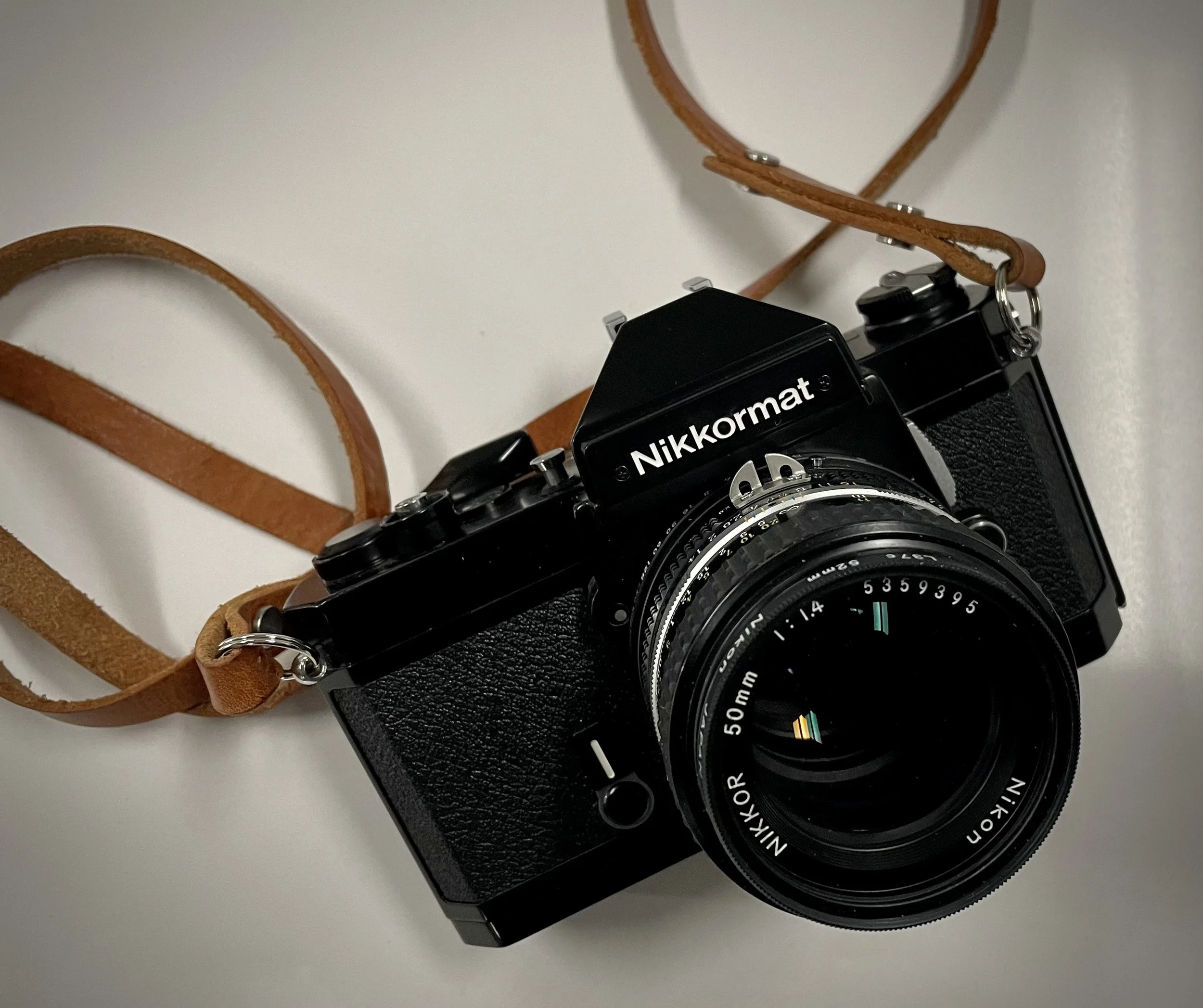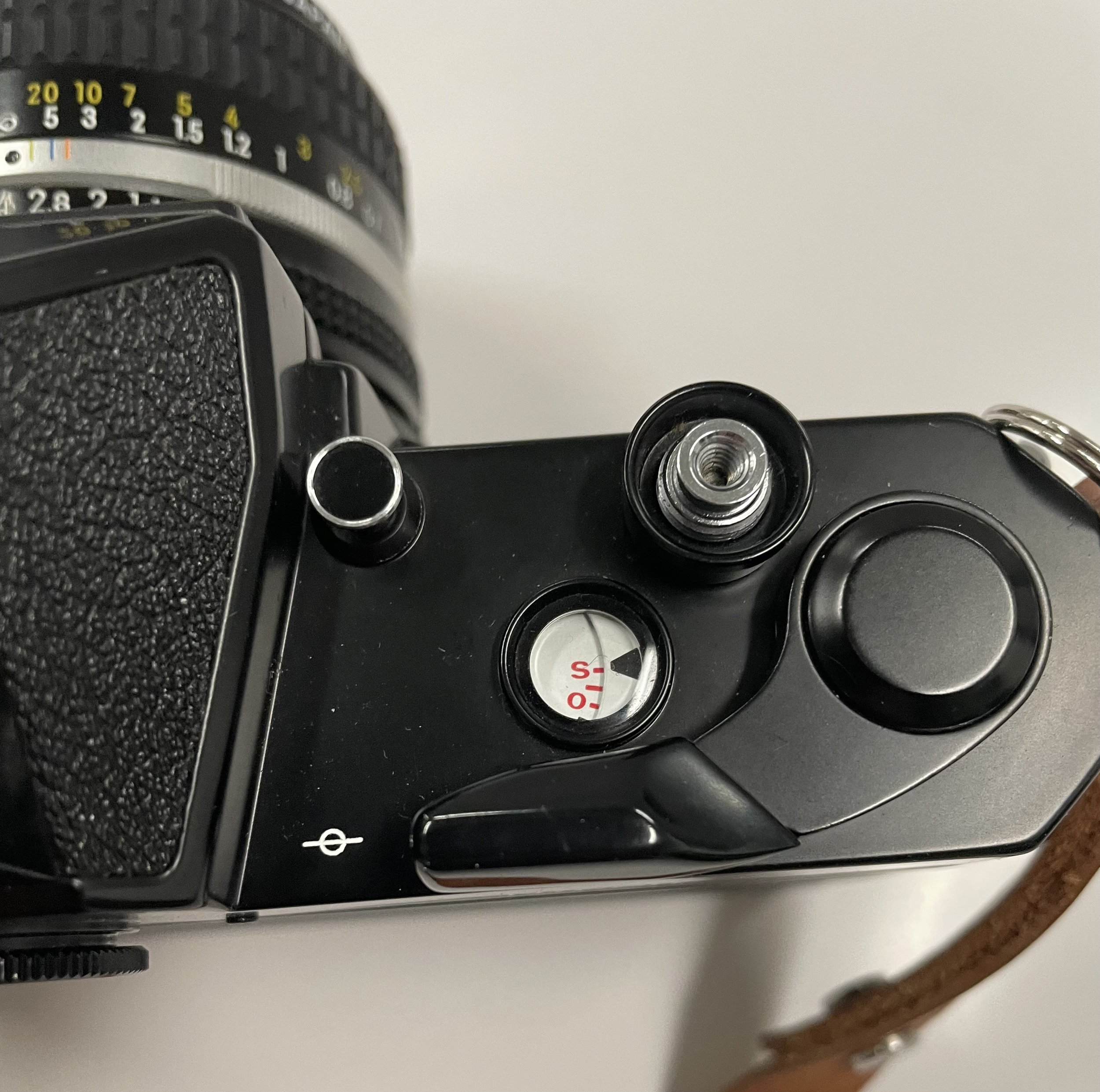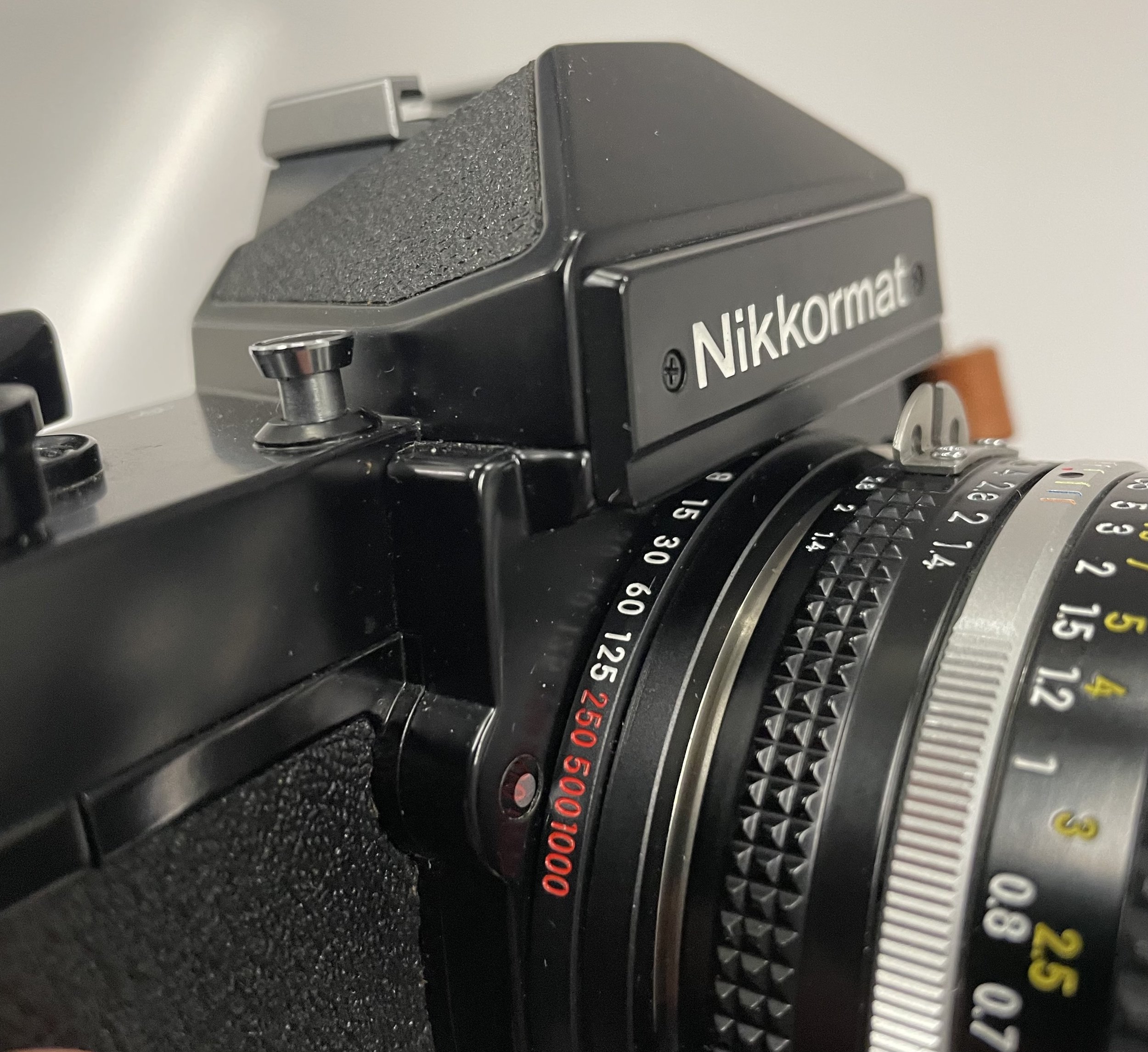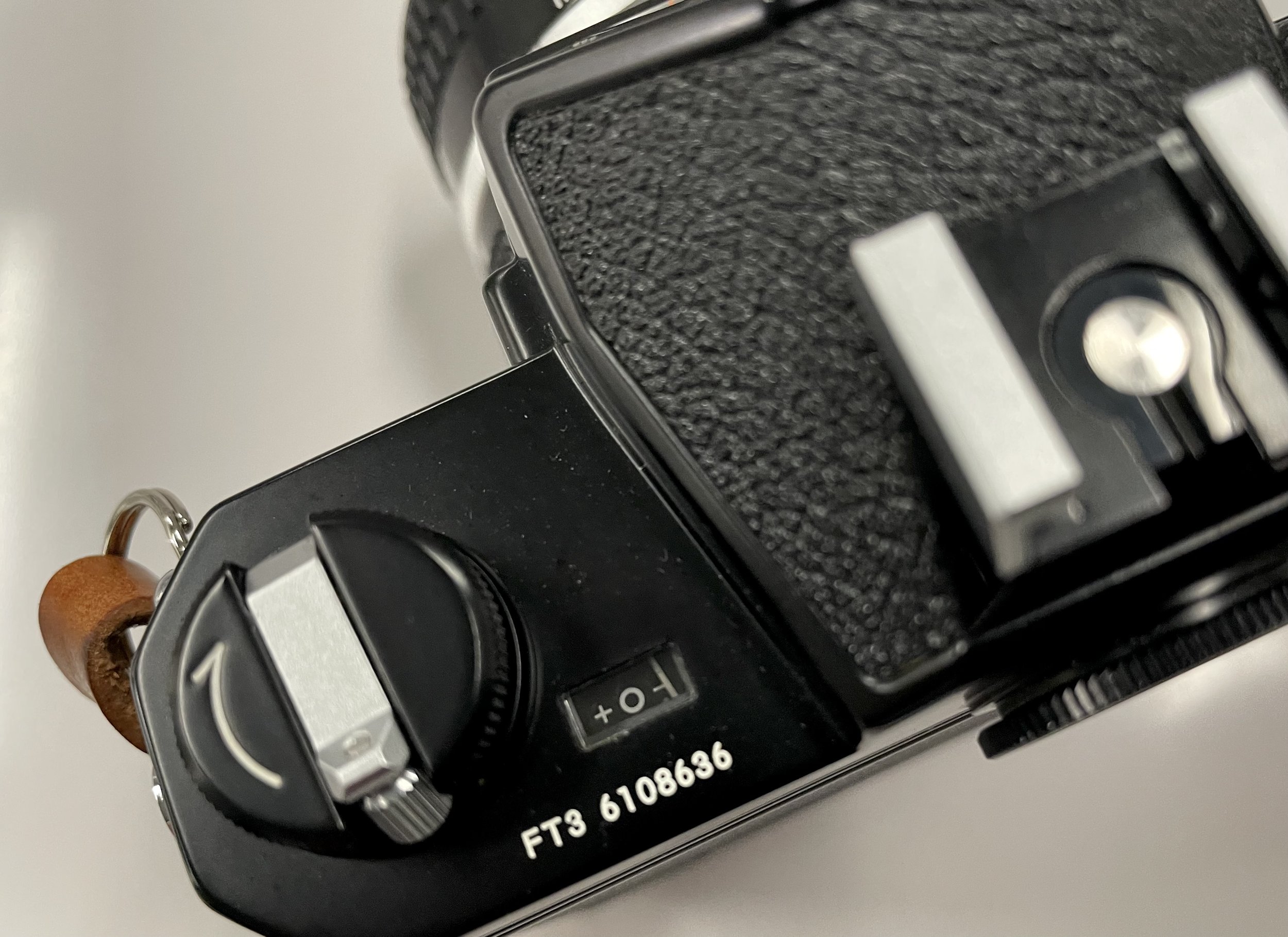Nikkormat: The Sport Utility of 35mm SLRs
I wish I could remember where I read it so I could credit the author, but someone called the Nikkormat the “Toyota Landcruiser” of cameras. I have to admit, at first glance, Nikkormat cameras seem very utilitarian. No nonsense machines. Mechanical minimalism at its best. But after a couple of weeks of walking around with my latest camera acquisition, the Nikkormat FT3, I have to admit that these cameras are much more than they seem.
Nikkormat FT3 with Nikkor 50mm f/1.4 Ai-s lens
Nikon introduced the Nikkormat line of cameras to the world in the late 1960s as a more affordable alternative to their professional F body. Nikkormats stayed in production until 1977 when they were replaced by the smaller-bodied Nikon FM. During the era when professional photographers used the Nikon F and F2, a Nikkormat body was often in their camera bag as well, serving as a back-up.
There are several cameras in the Nikkormat series. The Nikkormat FT and FS were introduced in 1965. The FT featured full-scene averaging TTL metering. It was the first Nikon camera with a built-in light meter. The FS was the FT without a meter. The Nikkormat FTn was introduced in 1967 and featured simpler lens mounting and Nikon’s 60/40 center-weighed TTL metering. All of these early Nikkormat meters were powered by 1.35v mercury batteries. The Nikkormat FT2 was introduced in 1975 and featured the Nikon F2 plastic tip on the film advance lever and self-timer and was powered by 1.5v S76 or SR44 batteries. The FT3 was manufactured for only a few months in 1977 as Nikon had the new FM in production as well. The FT3 is similar to the FT2 except that it supported Nikon’s auto-indexing lenses. There were also several Nikkormat EL models which offered auto-exposure.
With the exception of the FT3, all of the Nikkormats that preceded it require the photographer to “index” the camera’s meter to the lens. The procedure has come to be known as the “Nikon Shuffle.” The early Nikkormats had an indexing prong on the lens mount that mates to the “rabbit ears” on Nikkor manual focus lenses. When mounting the lens, you push the prong on the camera body all the way over to the right, set the lens aperture to f/5.6, line up the prong with the rabbit ears, mount the lens and then shuffle the lens aperture all the way to the left and back to the right. This “tells” the camera’s meter what the minimum and maximum aperture is of the lens you are using. Sounds complicated but it becomes second nature to anyone who has used these pre-AI Nikon bodies. I even find myself doing it when I mount AI lenses to more modern Nikon bodies.
I found my Nikkormat FT3 at my local camera shop. I was amazed at the condition this 47-year old camera is in. I cannot find a scratch or any brassing at all on the body. It appears unused. There was a similar condition FT2 on the shelf next to the FT3. I ended up making a deal on both, two of the cheapest film cameras I have ever purchased. The FT3 functions as designed. The meter in the FT2 was dead. I sent it to Jim Holman at International Camera Technicians. It is repaired and on its way back to me as I write this. Turns out the meter issue involved some wiring in the battery compartment and meter contacts that required cleaning.
While I was waiting for my FT2 to return from the shop, I spent some time with the FT3. When I mentioned earlier that the Nikkormats were marketed as less expensive alternatives to the F professional bodies, it is still very apparent that these cameras were from an era where hand assembly and inspection were the norm. Fit and finish is extraordinary. No planned obsolesce here, all metal, glass, levers and springs. The Copal Square vertically traveling focal plane shutter sounds amazing and very strong. The camera feels great in the hand, inspiring you to want to get out and take pictures.
One of the things I love about the Nikkormat is the big film frame counter. I find I need to grab my reading glasses to see what frame I am on with most cameras. Not the Nikkormat.
Big, beautiful film frame counter
A weird ergonomic quirk on these old Nikkormats is the placement of ASA and shutter speed controls. You’ll notice they are not on the top plate as is the case with most SLRs of this era. Similar to the Pentax K2, these controls are located on the lens mount. Here is the ASA setting:
And here is the shutter speed setting:
I found the Nikkormat’s lens mount ASA and shutter speed setting much easier to manage than my Pentax K2. The shutter speed control has a tab on the left side of the lens mount which makes adjusting speeds easy with the camera to your eye. The FT3’s viewfinder is big and bright, with shutter speeds visible at the bottom of the frame. Meter display is a simple, center-the-needle affair. The FT3 has Nikon’s nifty K screen with split-image focusing. One very cool feature is the additional metering display on the top plate of the camera.
I loaded some Kodak Ultramax 400—the very last roll of color film I had, in the FT3. Here are a few test shots from a bright day out at the coast.
And a few from an afternoon of wine tasting.
A friend of mine has an old Landcruiser with several hundred thousand miles on it. It screams utility but in a very refined way. Comfortable, dependable, capable, built to last. Much like the Nikkormat.
I am anxious to get the FT2 back from service. It will be interesting to compare the serviced FT2 with the FT3. And I have a number of nice non-AI Nikkors that will mate nicely with it.
If you are looking for a very capable 1970s vintage SLR, I would heartily recommend the FT2 or FT3 Nikkormat. FT2 prices start at $25. FT3 prices $50 and up. FT and FTn models are even cheaper, but you’ll have to shoot them with an external meter, Sunny 16 or pay a technician to modify them to take modern batteries. The Wein cell is an option too, but I’ve not used one.











